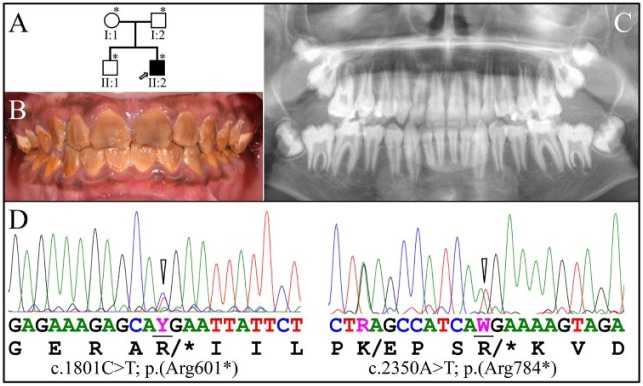Figure 3.
Family 3. (A) Pedigree of family 3. The proband (II:2) is the only affected member and is indicated by an arrow. Asterisks (*) mark the 4 family members recruited for this study. (B) Clinical photo of the proband’s secondary dentition at age 12 y 7 mo, showing hypomaturation amelogenesis imperfecta. The sizes and shapes of the crowns appeared to be normal, but all of the dental crowns were deeply stained brown. (C) The proband’s panoramic radiograph showed only minor contrast between the enamel and dentin layers and only in some places. (D) The proband and his father (I:2) are both heterozygous for the WDR72 c.1801C>T/p.(Arg601*) mutation (left; Y = C or T), while the proband and his mother (I:1) are both heterozygous for the WDR72 c.2350A>T/p.(Arg784*) stop-gain mutation (right). In this defective WDR72 allele, there was also a nearby polymorphism (WDR72 c.2341A>G/p.(Lys781Glu), which is relatively common and not likely to affect function. The proband is the only person in the family who is a compound heterozygote for the 2 WDR72 stop-gain mutations. His younger brother (II:1) has 2 normal WDR72 alleles.

